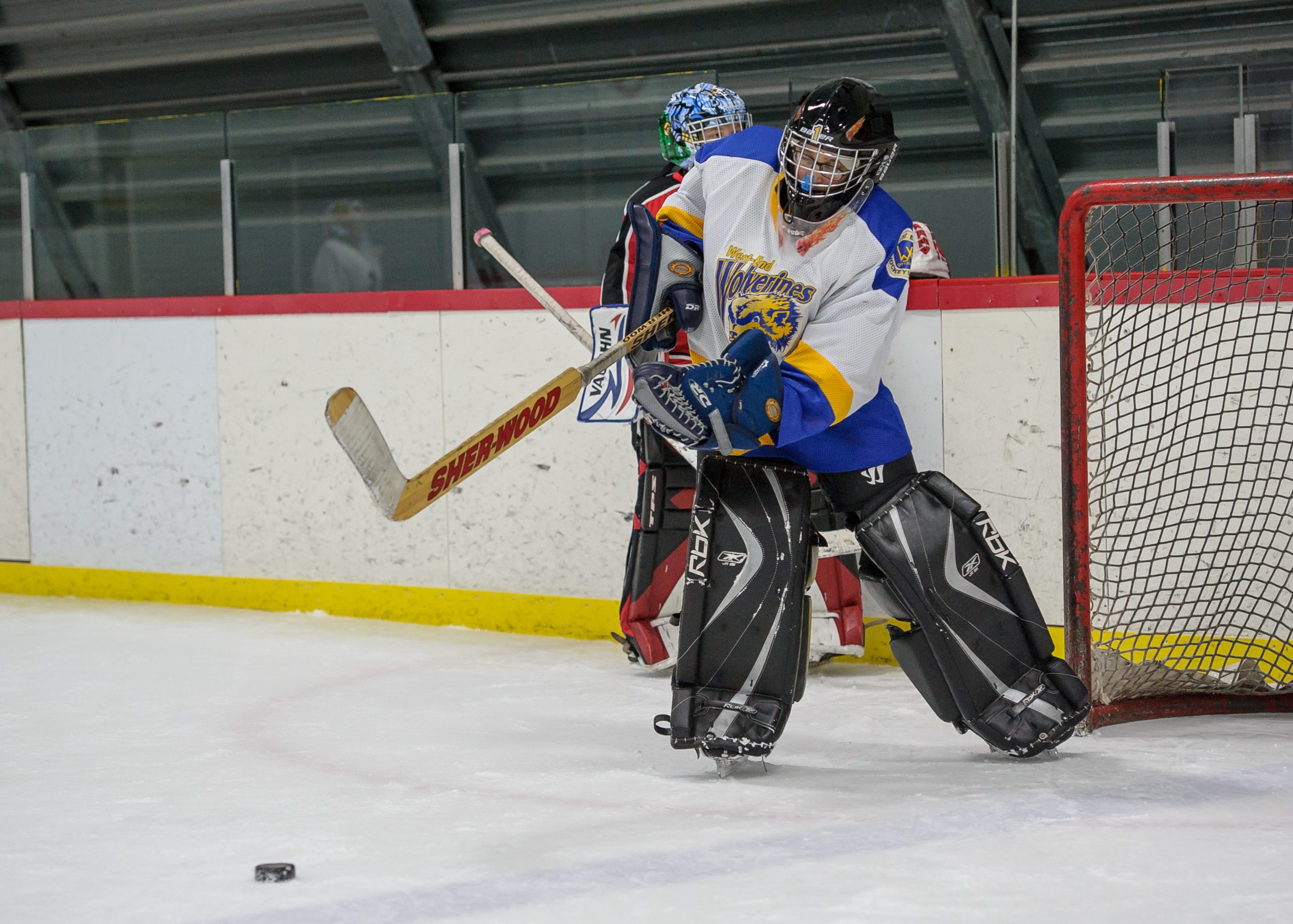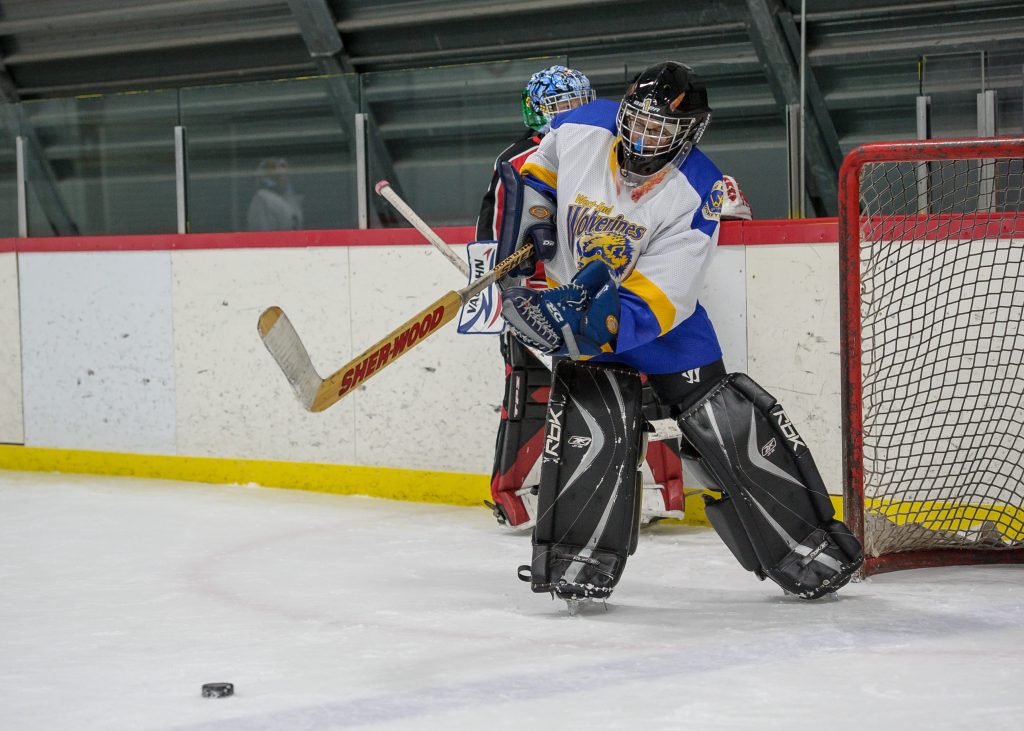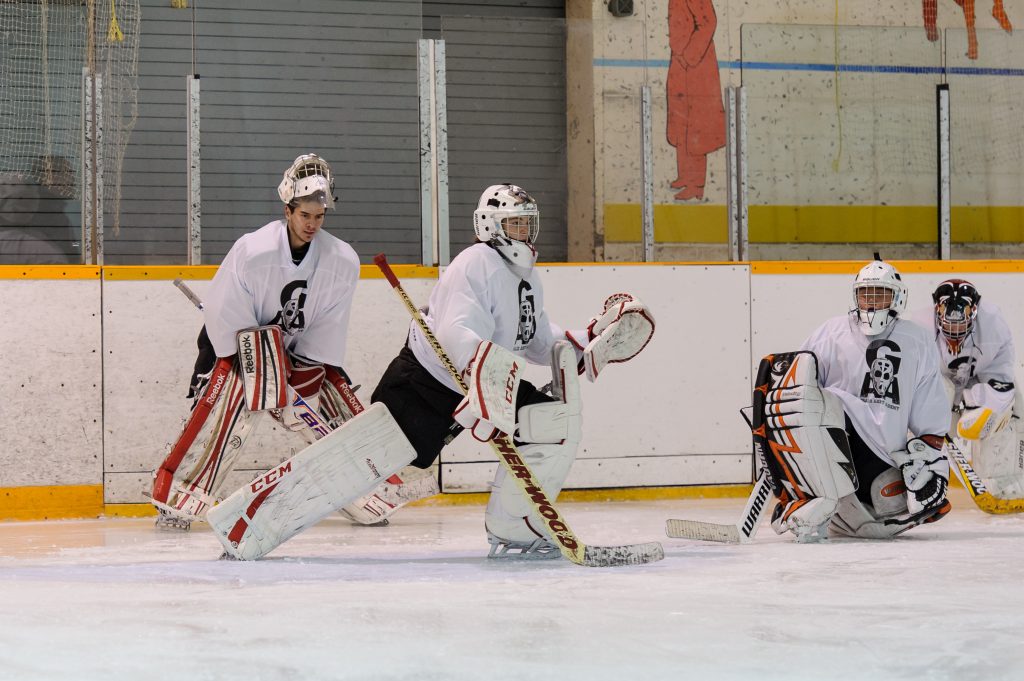
Tips for Coaches: Playing the Puck
Hockey coaches who have played or coached a team with a goaltender capable of playing the puck effectively, will tell you that it makes their team that much more dangerous to play against. But getting goaltenders involved in team practices outside of facing shots can be extremely difficult due to the need and pressure of developing the majority of the team.
 Although the goaltender must work on the most important part of her role on her team, as a team coach, you’re likely aware that it’s no secret that she and her parents may feel that team practices are a time where the goaltender is simply used for target practice, which is why parents fork out so much for extra goalie training sessions.
Although the goaltender must work on the most important part of her role on her team, as a team coach, you’re likely aware that it’s no secret that she and her parents may feel that team practices are a time where the goaltender is simply used for target practice, which is why parents fork out so much for extra goalie training sessions.
But if all coaches love to have a goaltender capable of playing the puck, why is there a lack of puck playing basics being taught at earlier stages of their development during team practices, or at goalie training sessions? The answer which many team coaches attribute this to is that they don’t know much about the goaltender’s position, and too many goalie coaches place too much emphasis on peppering goalies with as many pucks as possible with hopes that they’ll become better goaltenders.
Therefore, we’ve developed a list of tips for team coaches to help your goaltenders become comfortable with playing the puck at the earliest stages of their development:
Skating
 Although goalies have to be the best skaters on the ice, we know that we can slow down team skating drills. Goalie skates just aren’t meant for tight turns. But that shouldn’t excuse goaltenders from skating drills with a puck on their stick.
Although goalies have to be the best skaters on the ice, we know that we can slow down team skating drills. Goalie skates just aren’t meant for tight turns. But that shouldn’t excuse goaltenders from skating drills with a puck on their stick.
Enabling a goaltender the time to gain confidence with pushing a puck with their stick while in motion during early stage development, will cause a chain reaction of early progress. Once a goaltender is capable of pushing the puck with ease, they will naturally try their luck with their backhand. From there, stickhandling, tight turns, and pivots. Essentially, the earlier the goaltender gains confidence with puck control, the earlier they can begin taking their eyes off of the puck and assessing the play around them. This is absolutely necessary in order to ensure that goaltenders develop a comfort for having the puck on their stick while in motion.
Forcing Discomfort
Team coaches love working on breakouts. So much in fact that many dump pucks into the deep corner so that the defencemen have to pick up the puck in motion and carry it behind the net before setting up a breakout or passing it to their defensive partner. Imagine if your goaltender could meet the puck before it gets to the goal line, and play it up ice to quarterback a neutral zone transition while the other team performs a line change. It’s possible, but it means forcing goaltenders to step out of the comfort zone of their crease.
In order to do this in a practice, try having the defense start at the top of the circles and the forwards start at the goal line in the offensive zone. The coach then dumps the puck toward the corner of the defensive zone. This signals the players to start back toward the defensive zone, and the goalie rushes out of her crease to meet the puck rather than wait for it to reach her. As she reaches the puck, players stop skating toward the puck and begin curling for passing options.
Supplying your goalie with this kind of “real game” experience normally isn’t possible during goalie training sessions on smaller ice surfaces. So try it out!
Communication and Building Awareness
Goalies are no different than skaters in their need to keep their head up when the puck is on their stick. But because their comfort level of having the puck on their stick develops a little later than skaters, it’s important for coaches to enable goaltenders to face various situations which help them to problem solve. For example, one or two man strong forechecks, taking away the boards when the goaltender has the puck behind the net, etc.
Promoting a vocal on-ice presence is essential to any team’s success, but it also allows a goaltender to know where their teammates are when they are faced with pressure making playing the puck so much easier.
Not only is being vocal necessary, but goaltenders should get into the habit of performing a shoulder check if they are stopping the puck behind the net with their back toward the play.
And once again, goalies are not likely to receive this kind of experience during goalie training sessions, so make the most out of your team’s practices by keeping your goalie on their toes.
Passing and Clearing
Just like skaters, goaltenders may be stronger with playing the puck on their forehand rather than their backhand, or more accurate with a wrist shot than a snap shot. In order to enable goaltenders to become fully comfortable with their ability to move the puck in any situation whether under pressure or attempting to clear the zone, they require opportunities in practices to target their passing accuracy, control, power, and clearing height by using multiple puck moving methods.
As goalie coaches, we have a responsibility to each of our students to make the most out of every goalie training session that they attend. Most of the time, we will focus on footwork, and game-situations which result in scoring opportunities. But team coaches do have opportunities to help their goaltenders develop in this area.
We understand that as a team coach, supplying goaltenders with opportunities for their own “target practice” isn’t as simple as it sounds. In some cases, powerskating coaches may wish to work with skaters only when invited to team practices. If this is the case, it may be possible to use a portion of the ice for goaltenders to work on their passing, and shooting on their forehand and backhands while directing pucks into a net.
Hopefully, you found this list of tips useful. If you have any questions about how you can help your goalie become better at playing the puck, do not hesitate to contact us.


Leave a Reply